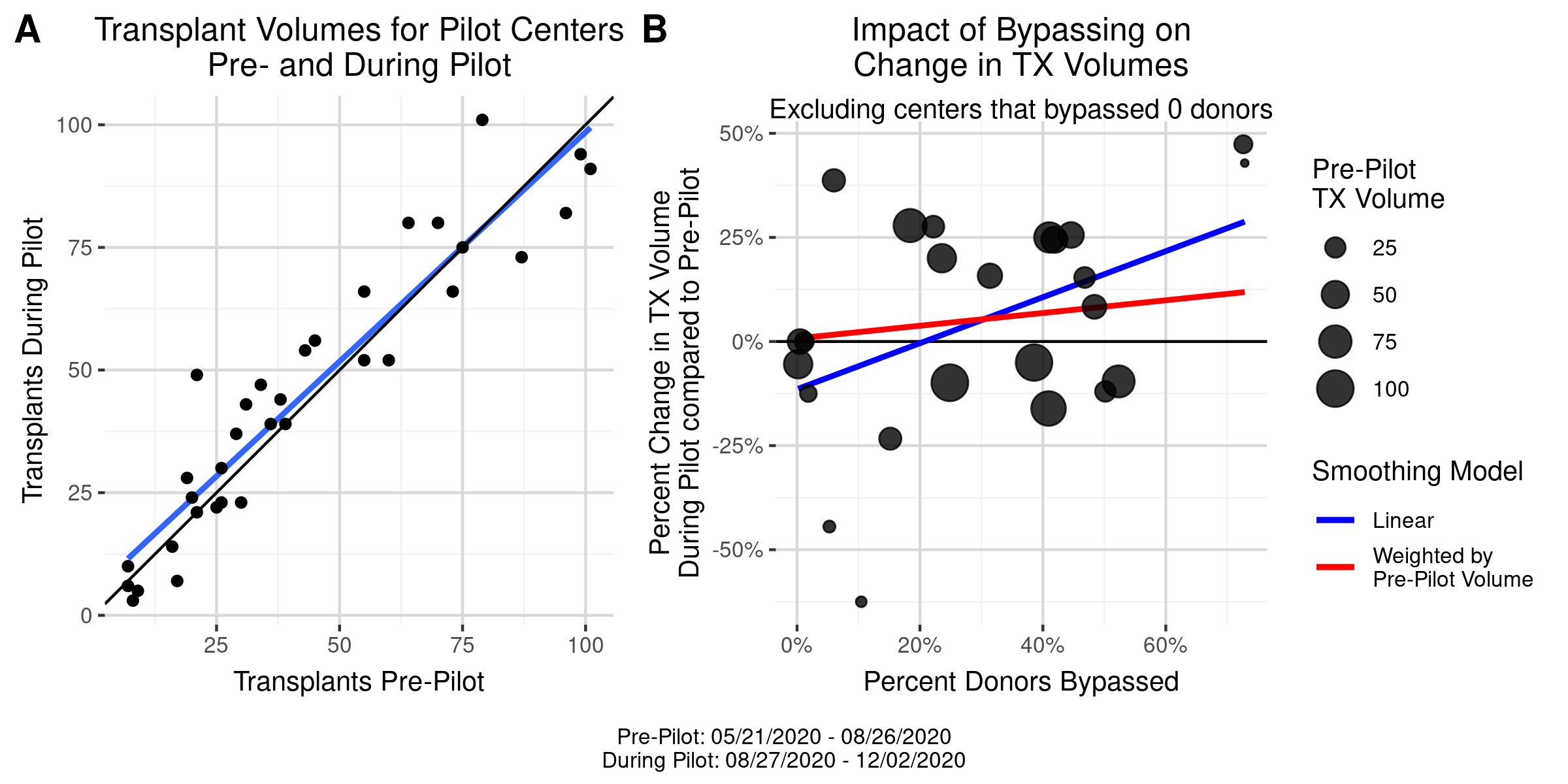Kidney Programs Can Filter Off a Majority of Their Unwanted Organ Offers without Harming Transplant Volumes
Research, United Network for Organ Sharing, Richmond, VA
Meeting: 2021 American Transplant Congress
Abstract number: LB 21
Keywords: Allocation, Cadaveric organs, Resource utilization, Screening
Topic: Clinical Science » Kidney » Kidney Deceased Donor Allocation
Session Information
Session Name: Late Breaking: All Organs
Session Type: Rapid Fire Oral Abstract
Date: Tuesday, June 8, 2021
Session Time: 6:00pm-7:00pm
 Presentation Time: 6:20pm-6:25pm
Presentation Time: 6:20pm-6:25pm
Location: Virtual
*Purpose: Evaluate if multifactorial filters can reduce unwanted kidney offers to centers, thereby reducing administrative burden and getting to the accepting candidate quicker.
*Methods: 34 centers participated in the second phase of the OPTN Offer Filters Pilot which ran from August 26, 2020 to December 2, 2020. The OPTN pre‑loaded a set of machine learning-derived recommended filters for each center prior to the start of the pilot. Recommended filters were derived using recursive partitioning trees based on centers’ 2018-2019 acceptance practices and included donor profiles for which a center received offers from at least 20 donors with 0 acceptances. Centers were also able to create their own custom multi-factorial filters to reduce unwanted kidney offers. New in this phase, centers could identify specific candidate groups (high CPRA, 0-ABDR mismatch, age limits) who would still receive offers despite the donor profile. Additionally this phase introduced the ability to turn filters “on” to actually avoid receiving (bypassing) offers meeting filter criteria.
*Results: 26 of 34 centers participating in the pilot elected to turn one or more filters on for bypassing. OPOs attempted to send 304,245 offers from 2,448 unique donors to these 26 centers. The centers’ bypass filters removed 206,933 (68%) offers. Individual center bypasses ranged from 0% to 94% of offers (0% to 73% of donors) filtered. Despite bypassing a large percentage of offers, pre-pilot transplant volumes closely mirrored those observed during the pilot (R2 = 0.88, Fig 1A). In fact, bypassing more offers was slightly correlated with an increase in transplants during the pilot (R2 = 0.21, Fig 1B). When weighting centers by their pre-pilot volumes, the pilot participants who turned filters on increased their transplant volumes by 5.4%, compared to a 3.1% decrease in non-pilot centers over the same period. Paired t-tests did not reveal a significant change in transplant volumes. Changes in offer acceptance observed to expected ratios before and during the pilot varied among the pilot centers and did not show trends different than the nation, even when broken out by KDRI.
*Conclusions: The Offer Filters Pilot demonstrated both the potential of multifactorial filters to reduce unwanted organ offers and the willingness of centers to turn these filters on for bypassing. Despite bypassing a large proportion of offers, transplant volumes were not harmed. Some pilot centers were even able to increase their transplant volumes during the pilot, despite receiving upwards of 75% fewer offers.
To cite this abstract in AMA style:
Toll A, McGehee H, McTier R, Stewart D. Kidney Programs Can Filter Off a Majority of Their Unwanted Organ Offers without Harming Transplant Volumes [abstract]. Am J Transplant. 2021; 21 (suppl 3). https://atcmeetingabstracts.com/abstract/kidney-programs-can-filter-off-a-majority-of-their-unwanted-organ-offers-without-harming-transplant-volumes/. Accessed November 1, 2025.« Back to 2021 American Transplant Congress

